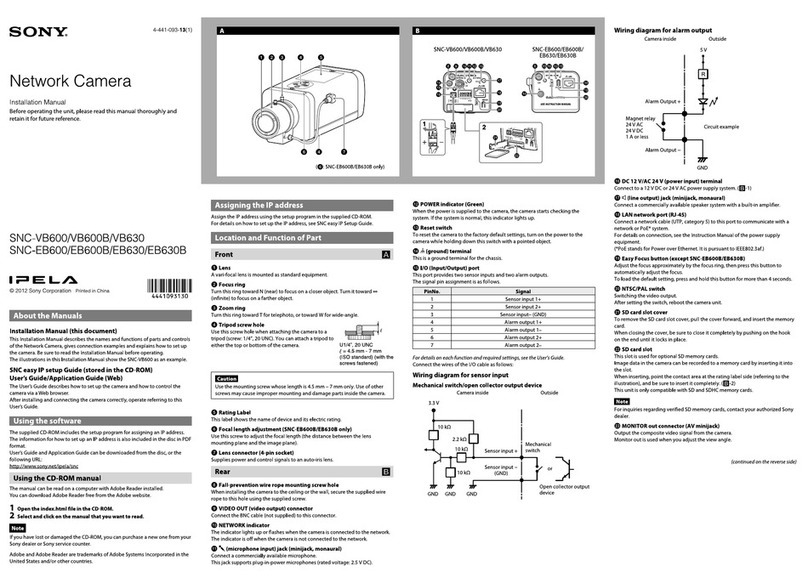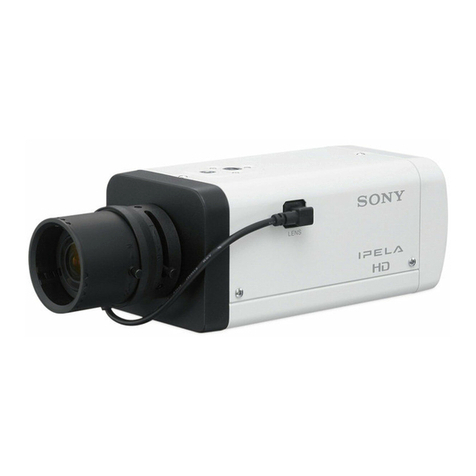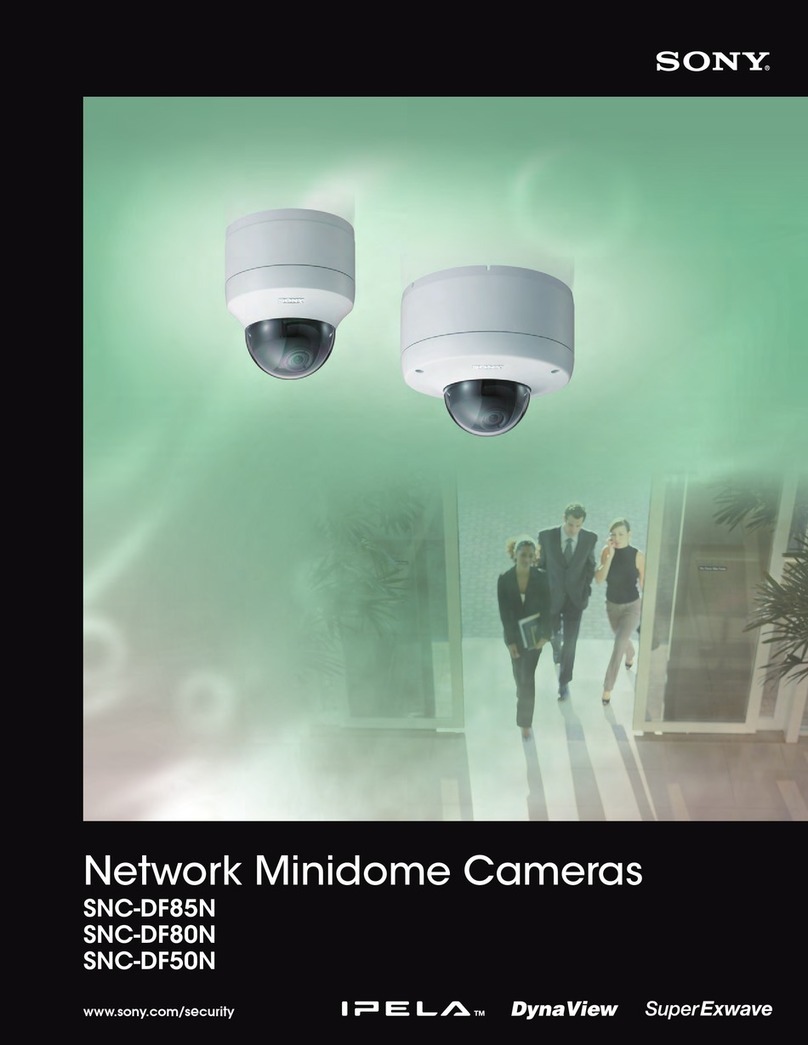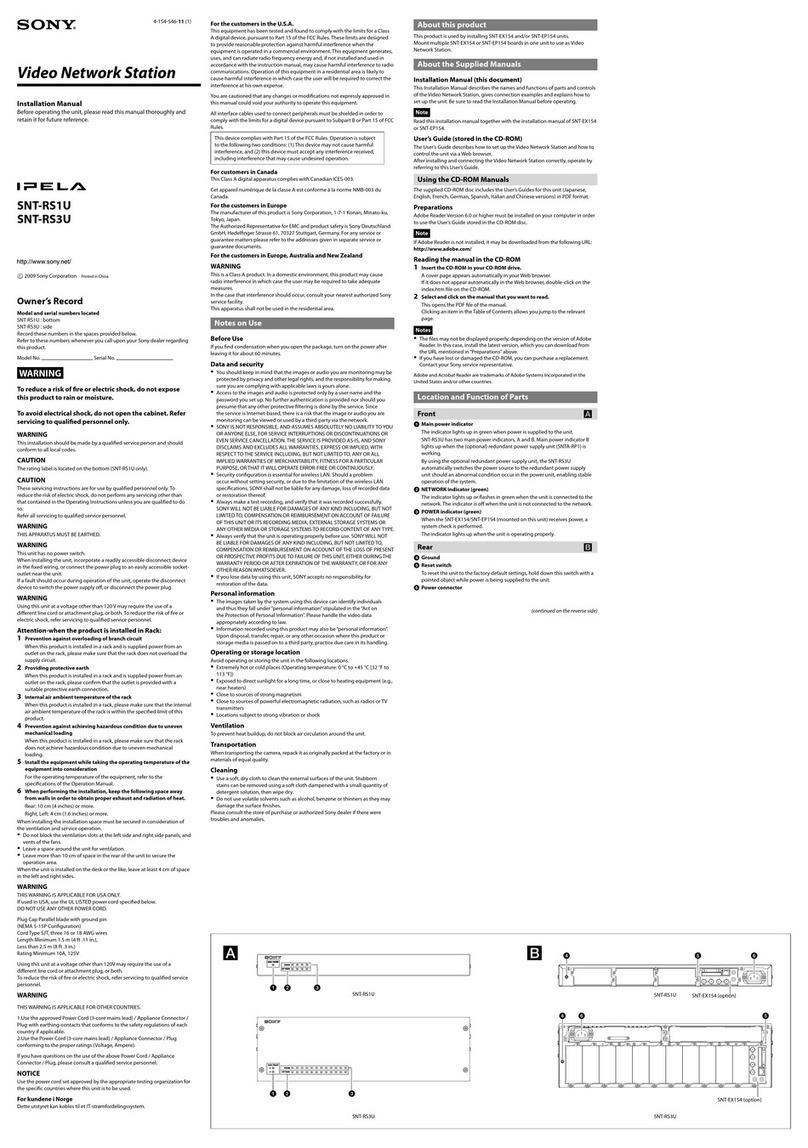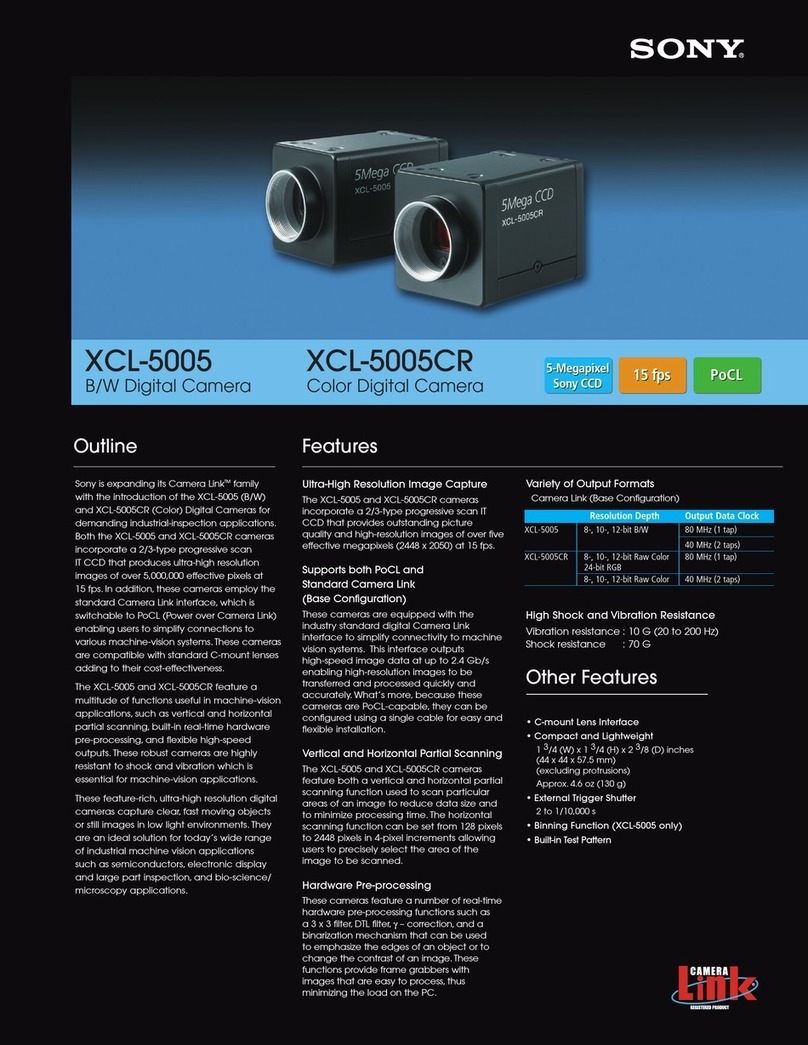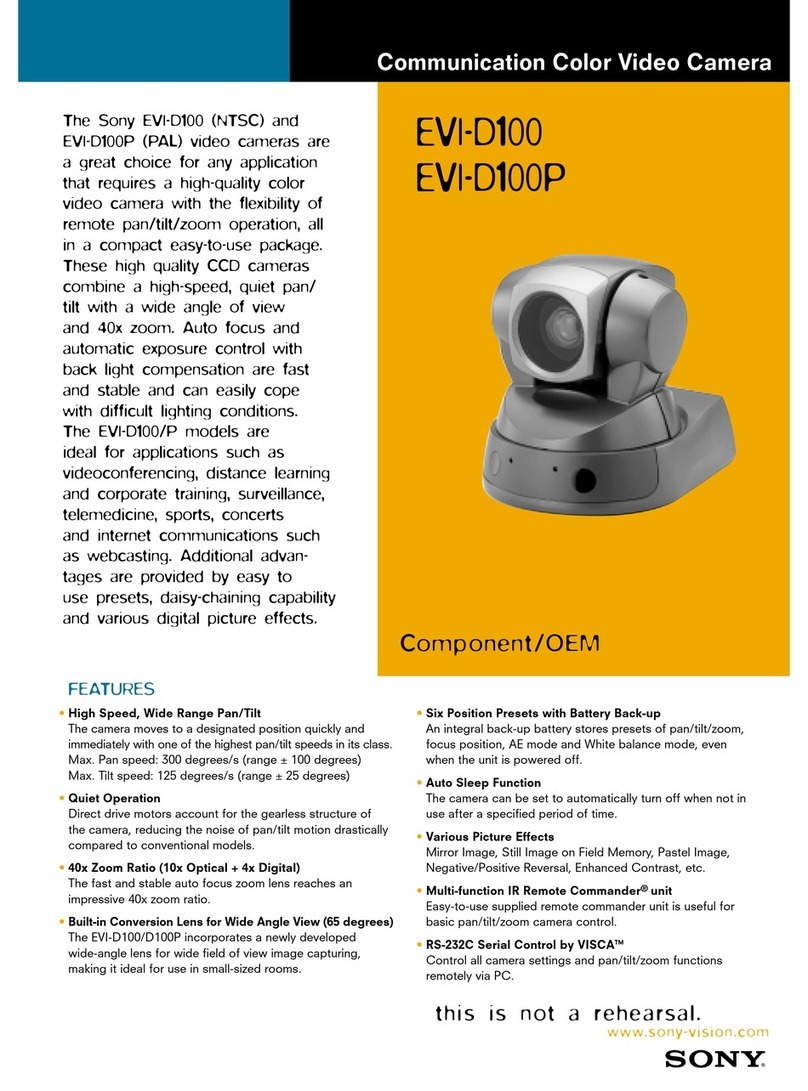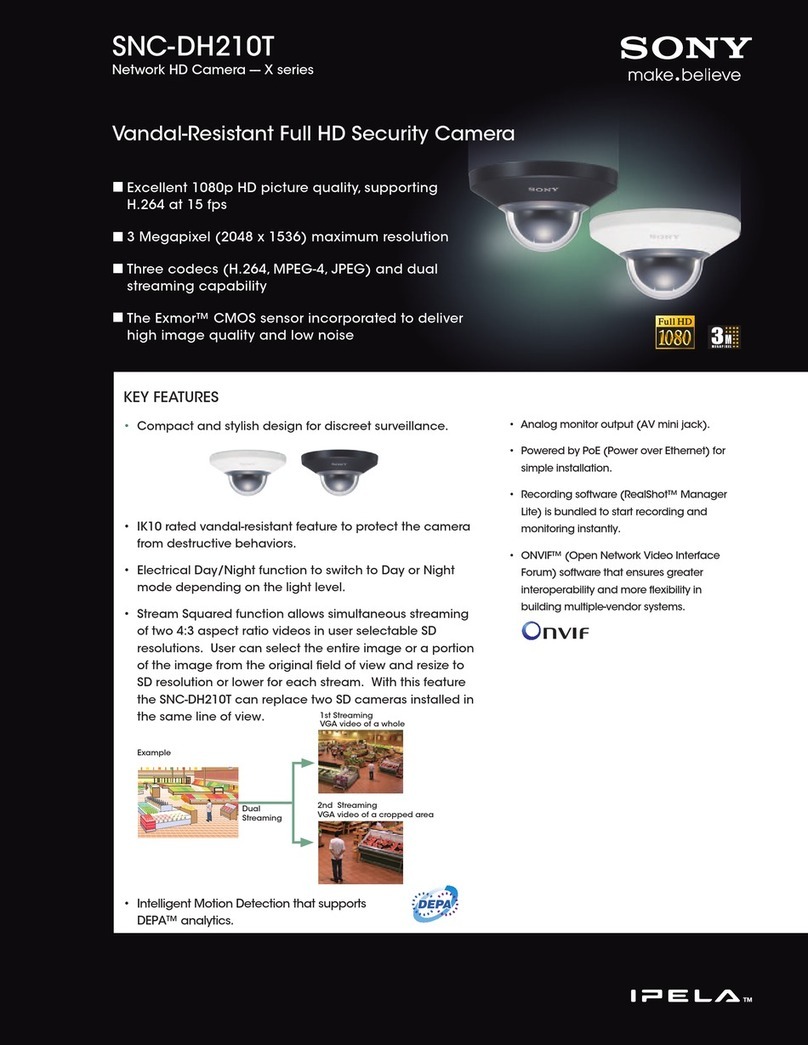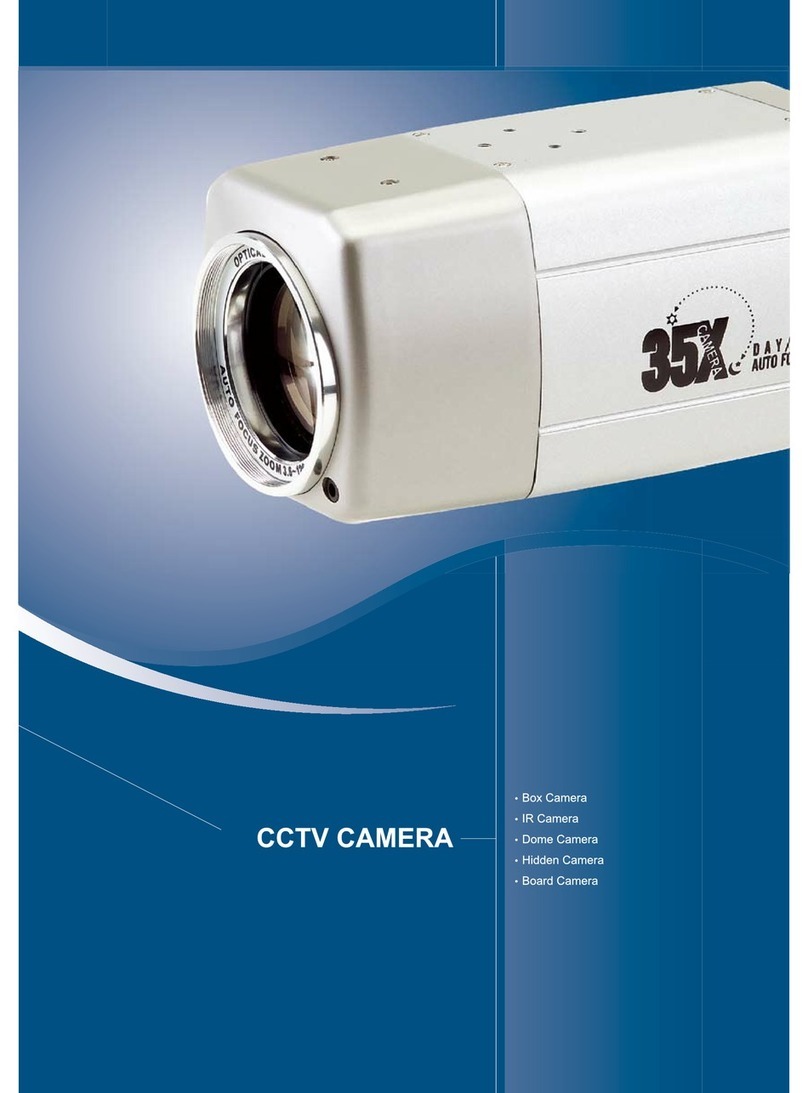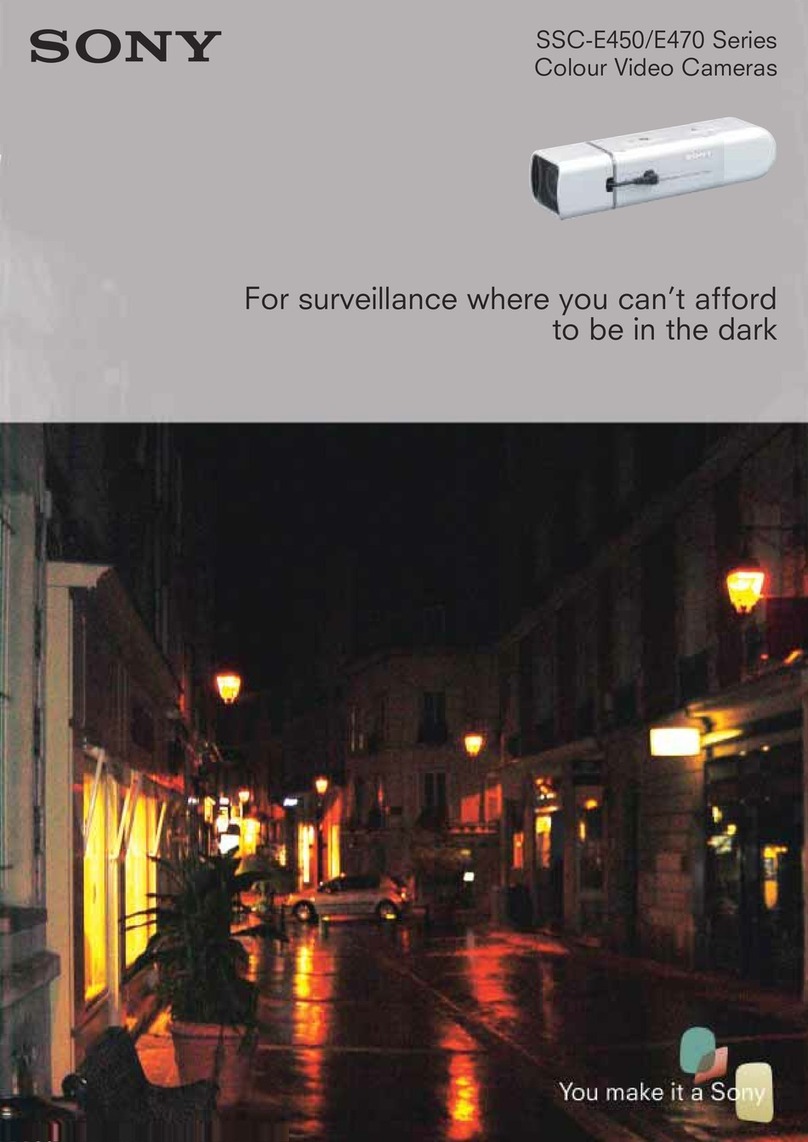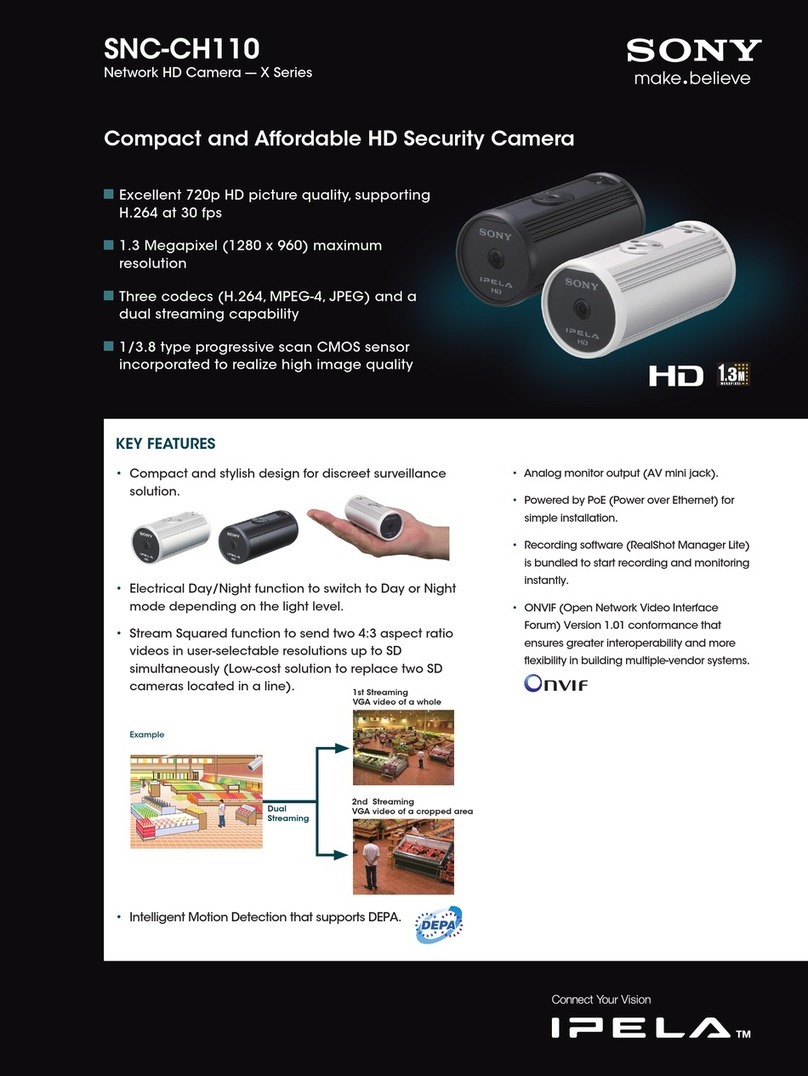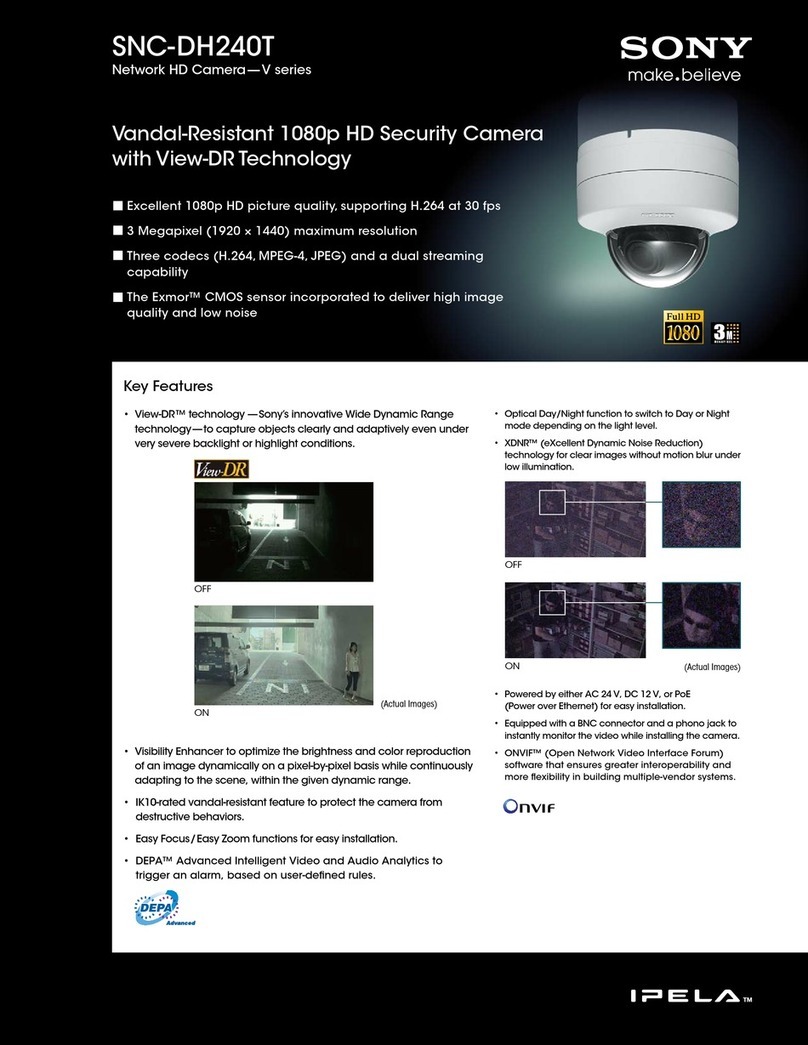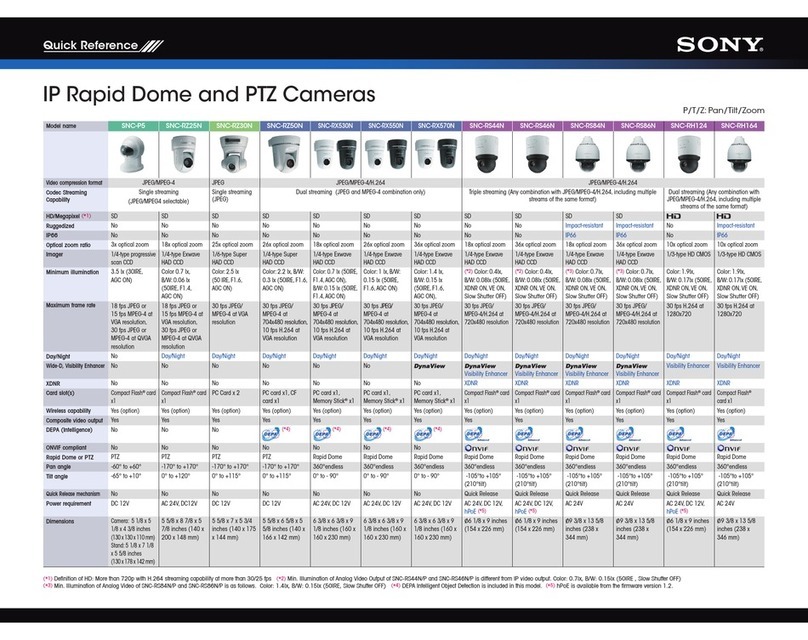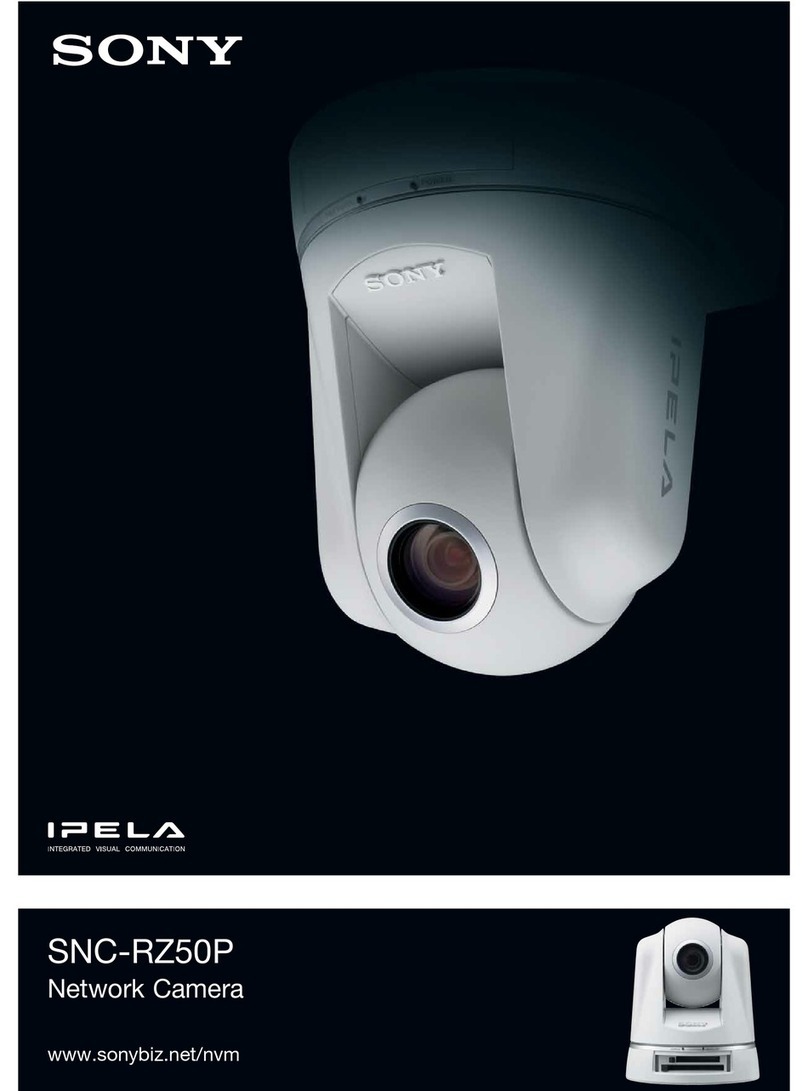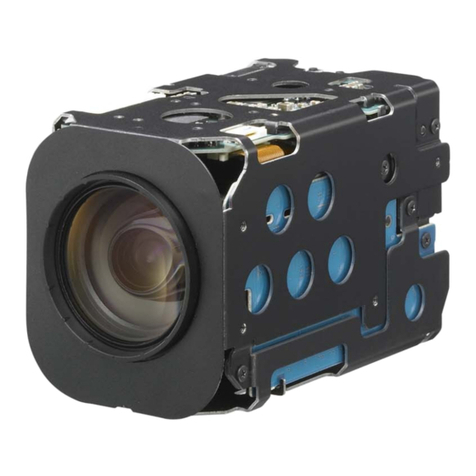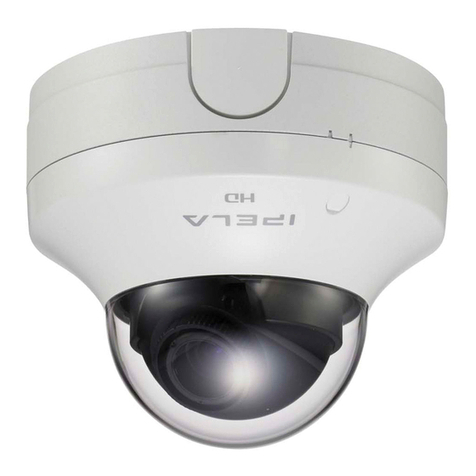
Inside B
7Mode setting DIP switch
1: INT/LL (line lock) switch (Initial setting: LL)
Use this switch to set the camera synchronization mode to INT
(internal) or LL (line lock, Only when the power is AC 24 V).
2: AGC (automatic gain control) switch (Initial setting: ON)
Set to ON to adjust the gain of the video amplifier automatically
according to the brightness of the object.
3:
SSC-CD45/CD45P:
BLC (backlight compensation) switch (Initial setting: OFF)
Use this switch to adjust the exposure to compensate for situations
where the subject is lit from behind.
Note
When BLC switch is set to ON, a hunting may be generated due to a
picture. In this case, set BLC switch to OFF.
SSC-CD49/CD49P:
DynaView switch (Initial setting: OFF)
Set this switch to ON to active the DynaView function.
4: ATW switch (Initial setting: ATW)
ATW: Automatic adjusting function of the white balance, effective for
use under special light like a sodium lamp.
ATW Pro: Automatic adjusting function of the white balance according
to the color temperature based on a fluorescent light, incandescent
lighting, or natural light.
5-7: Not used with this unit.
8V PHASE (vertical phase) adjustment screw
Use this screw to adjust the vertical phase of cameras synchronized
by LL.
9Dome casing screw hole
0Camera installation holes (2 positions)
Make sure to tighten the screws securely when installing the camera.
qa Camera head fixing screw
First loose the screw and face the camera head to the desired
direction, then tighten the screw to fix it.
qs Monitor out jack
Connect to a video input connector of a monitor . You can adjust the
camera while looking at the image on the monitor. After adjusting the
camera, disconnect the cable.
Bottom C
qd BNC cable
Outputs a composite video signal. Connect to a composite video input
connector of a video monitor, VCR, etc ( ).
qf 24V AC/12V DC (power input) cable
Connect to a 24V AC or 12V DC power supply system ( ). The
connector tip is a quick-disconnect type. You can screw the cables in
the tip.
qg Screw hole for wire rope
(continued on the reverse side)
3-113-373-01 (1)
2007 Sony Corporation Printed in China
Color Video Camera
Operating Instructions
Before operating the unit, please read this manual thoroughly and
retain it for future reference.
Features
This is a dome-shaped color video camera for which the 1/3 type Super
HAD CCD®has been adopted. It has the following features:
• Manual setting of the camera direction – panning, tilting and rotating
•Vari-focal auto iris lens as standard equipment. The focal length of the
lens is from 2.8 mm to 10 mm.
•High quality CCD and clear dome cover enable high sensitivity.
•Backlight compensation through the center measurement (SSC-CD45/
CD45P only).
•Wide dynamic range (128 times wider than normal) using DynaView
technology (SSC-CD49/CD49P only)
•Automatic white balance tracking and adjustment (ATW/ATW-PRO)
•AC 24 V / DC 12 V power supply system
•Line lock function (24 V AC)
•Super HAD CCD®is a registered trademark of Sony Corporation.
• DynaViewTM is a registered trademark of Sony Corporation.
Notes on Use
Operating or storage location
Do not shoot an extremely bright object (an illumination, the sun, etc.).
Also, avoid operating or storing the camera in the following locations, as
these can be a cause of a malfunction.
•Extremely hot or cold places (Operating temperature: –20 °C to
+50 °C [–4 °F to 122 °F])
•Exposed to direct sunlight for a long time, or close to heating
equipment (e.g., near heaters)
•Close to sources of strong magnetism
•Close to sources of powerful electromagnetic radiation, such as radios
or TV transmitters
•Locations subject to vibration or shock
•Humid or dusty locations
•Locations exposed to rain
•Locations under the influence of fluorescent light or reflection of a
window
•Under an unsteady light (the image will flicker.)
Ventilation
To prevent heat buildup, do not block air circulation around the camera.
Transportation
When transporting the camera, repack it as originally packed at the
factory or in materials of equal quality.
Cleaning
•Use a blower to remove dust from the lens.
•Use a soft, dry cloth to clean the external surfaces of the camera.
Stubborn stains can be removed using a soft cloth dampened with a
small quantity of detergent solution, then wipe dry.
•Do not use volatile solvents such as alcohol, benzene or thinners as
they may damage the surface finishes.
Note on laser beams
Laser beams may damage a CCD. You are cautioned that the surface of a
CCD should not be exposed to laser beam radiation in an environment
where a laser beam device is used.
Typical CCD Phenomena
The following phenomena may appear on the monitor screen while you
are using a CCD color video camera. These phenomena stem from the
high sensitivity of the CCD image sensors, and do not indicate a fault
within the camera.
Vertical smear
A “smear” may appear to extend vertically from very bright subjects, as
shown below.
This phenomenon is common to CCD imaging elements using an interline
transfer system, and is caused when electric charge induced by infrared
radiation deep within the photo sensor is transferred to the resistors.
Aliasing
When shooting fine stripes, straight lines or similar patterns, the lines may
become slightly jagged.
Blemishes
A CCD image sensor consists of an array of individual picture elements
(pixels). A malfunctioning sensor element will show up
as a single pixel blemish in the image. This is generally not a problem.
White speckles
When you shoot a poorly illuminated object at a high temperature, small
white dots may appear all over the entire screen image.
Location and Function of Part
The figure shows the camera without the dome casing and slit cover.
Side A
1Indoor wiring slit (knockout type)
When you wire indoors, cut this part with a nipper or similar and feed
the cable through it.
Note
Take care not to trap the cable between the camera and ceiling or the wall.
If the cable is trapped, it may break and cause a fire or electric shock.
2Camera head holder
3Lens
4Lens ring fixing screw
Loosen this screw before adjusting the zoom and focus, then tighten it
to fix the lens position. The screw can be inserted at one of three
points.
5Zoom ring
Turn this ring to adjust the field of view.
6Focus ring
Turn this ring to adjust the focus.
English
Owner’s Record
The model and serial numbers are located on the bottom. Record these
numbers in the spaces provided below.
Refer to these numbers whenever you call upon your Sony dealer
regarding this product.
Model No. Serial No.
WARNING
To reduce a risk of fire or electric shock, do not expose
this product to rain or moisture.
To avoid electrical shock, do not open the cabinet. Refer
servicing to qualified personnel only.
WARNING
This installation should be made by a qualified service person and should
conform to all local codes.
WARNING
A readily accessible disconnect device shall be incorporated in the
building installation wiring.
WARNING (for Installers only)
Instructions for installing the equipment on the ceiling or the wall:
After the installation, ensure the connection is capable of supporting at
least a force of 50 Newtons (N) downwards.
CAUTION
The rating label is located on the bottom.
Power Supply
Caution for U.S.A. and Canada
The SSC-CD45/CD49 operates on 24V AC or 12V DC.
The SSC-CD45/CD49 automatically detects the power.
Use a Class 2 power supply which is UL Listed (in the U.S.A) or CSA-
certified (in Canada).
Caution for other countries
The SSC-CD45/45P/CD49/49P operates on 24V AC or 12V DC.
The SSC-CD45/45P/CD49/49P automatically detects the power.
For customers in the U.S.A.
This device complies with Part 15 of the FCC Rules. Operation is
subject to the following two conditions: (1) This device may not cause
harmful interference, and (2) this device must accept any interference
received, including interference that may cause undesired operation.
NOTE: This equipment has been tested and found to comply with the limits
for a Class A digital device, pursuant to part 15 of the FCC Rules. These
limits are designed to provide reasonable protection against harmful
interference when the equipment is operated in a commercial environment.
This equipment generates, uses, and can radiate radio frequency energy
and, if not installed and used in accordance with the instruction manual,
may cause harmful interference to radio communications. Operation of this
equipment in a residential area is likely to cause harmful interference in
which case the user will be required to correct the interference at his own
expense.
You are cautioned that any changes or modifications not expressly approved
in this manual could void your authority to operate this equipment.
All interface cables used to connect peripherals must be shielded in order
to comply with the limits for a digital device pursuant to Subpart B of Part
15 of FCC Rules.
For Customers in Canada
This Class A digital apparatus complies with Canadian ICES-003.
Cet appareil numérique de la classe A est conforme à la norme NMB-003
du Canada.
For customers in other countries
WARNING
This is a Class A product. In a domestic environment, this product may
cause radio interference in which case the user may be required to take
adequate measures.
In the case that interference should occur, consult your nearest
authorized Sony service facility.
ATTENTION
The electromagnetic fields at specific frequencies may influence the
picture of the unit.
AB
Upper
Lower
No.
1
2
3
4
Switch
INT/LL
AGC
BLC (SSC-CD45/CD45P)
DynaView (SSC-CD49/49P)
ATW
Upper (ON)
LL
ON
ON
ATW Pro
Lower
INT
OFF
OFF
ATW
Position
5
6
4
3
2
7
8
0
qa
qs
qf
qd
qg
C
SSC-CD45/CD45P
SSC-CD49/CD49P
Video monitor screen Pale vertical smear
Very bright subject (such as an
electric lamp, fluorescent lamp,
sunlight, or strong reflected light)


